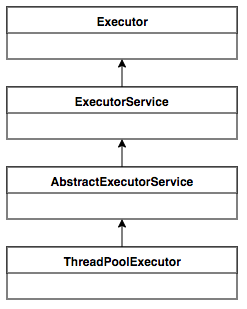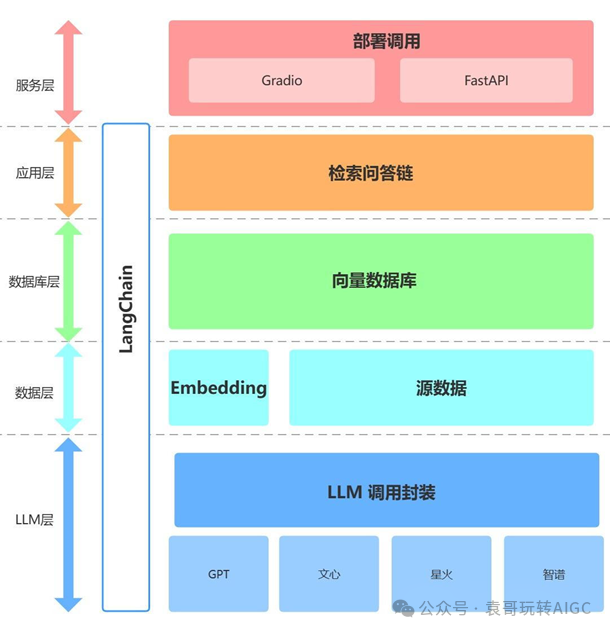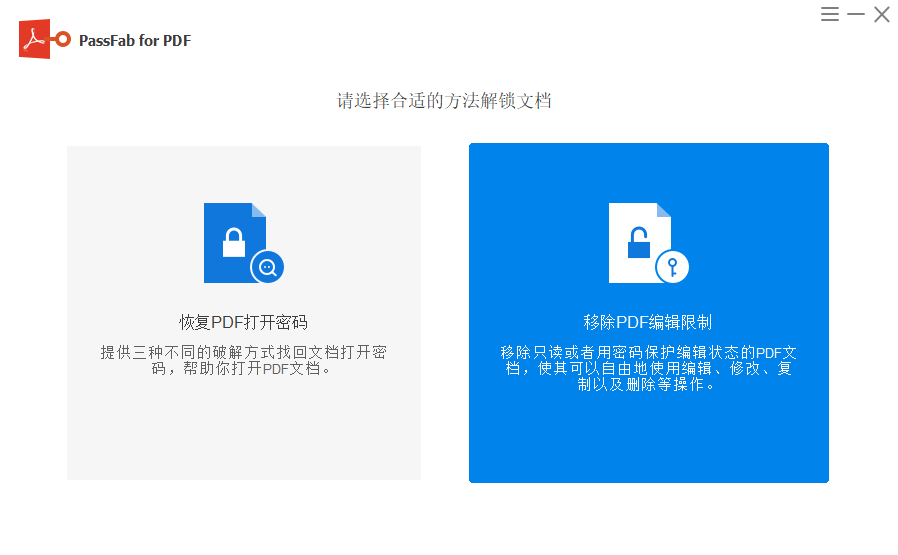Java8新特性(二) Stream与Optional详解
一. Stream流
1. Stream概述
1.1 基本概念
Stream(java.util.stream) 是Java 8中新增的一种抽象流式接口,主要用于配合Lambda表达式提高批量数据的计算和处理效率。Stream不是一种数据结构,它是来自数据源的一种元素序列组织视图,并支持一系列聚合操作,比如过滤、排序、映射、遍历等;其中,数据源可以是一个数组、集合或I/O channel等。
Stream的主要目的在于计算,它以一种声明性方式处理数据集合与数据,是函数式编程模式的重要体现。关于Stream流,可以把它理解为一种管道式的操作集,它允许将一系列计算过程进行链式封装,并像流水线一样对数据源进行处理,最后生成并返回结果集合。
1.2 操作流程
(1)流的创建: 一个数据源(如集合、数组等),用于获取一个流;
(2)中间操作: 一个中间操作链(包含多个中间操作),每个中间操作都会返回一个新的流,用于对数据源的数据进行处理;
(3)终止操作: 一个终止操作,用于执行中间操作链并产生最终结果,注意终止操作后该Stream就不能再使用了;
1.3 基本特性
- 惰性求值: 流上的中间操作不会立即执行(仅创建视图),只有在遇到终止操作时才会触发计算;
- 非数据结构: 不会保存数据,也不会存储元素,只保存操作;
- 不改变源数据: 不会改变源数据,计算结果会保存到新的流中,但对于对象引用来说可以修改其属性值;
2. 流的创建
2.1 从数组创建
- Stream.of: 调用
Stream类的静态方法of(),通过显示值创建一个流;- Arrays.stream: 调用
Arrays的静态方法stream(),来从数组中创建一个流;
Integer[] arr = {1,2,3,4,5};
Stream<Integer> stream_arr = Arrays.stream(arr);
// Stream<Integer> stream_of = Stream.of(1, 2, 3, 4, 5);
Stream<Integer> stream_of = Stream.of(arr);
2.2 从单列集合
单列集合如List、Set,Java8 中的 Collection 接口被扩展,提供了获取集合流的方法
Collection.stream()
List<String> names = Arrays.asList("Alice", "Bob", "Charlie", "David");
Stream<String> stream = names.stream();
2.3 从双列集合
双列集合如Map,一般转换成单列集合后再创建流
Map<String,Integer> ids = new HashMap<>();
ids.put("小新",19);
ids.put("黑子",17);
ids.put("哆啦",16);
Stream<Map.Entry<String, Integer>> stream = ids.entrySet().stream();
3. 数据准备
@Data
@AllArgsConstructor
@NoArgsConstructor
@EqualsAndHashCode//用于后期的去重使用
public class Book {
//id
private Long id;
//书名
private String name;
//分类
private String category;
//评分
private Integer score;
//简介
private String intro;
}
@Data
@NoArgsConstructor
@AllArgsConstructor
@EqualsAndHashCode//用于后期的去重使用
public class Author {
//id
private Long id;
//姓名
private String name;
//年龄
private Integer age;
//国家
private String country;
//作品
private List<Book> books;
}
private static List<Author> getAuthors() {
//数据初始化
Author author1 = new Author(1L, "鲁迅", 55, "中国", null);
Author author2 = new Author(2L, "维克多.雨果", 83, "法国", null);
Author author3 = new Author(3L, "安东.巴甫洛维奇.契诃夫", 44, "俄国", null);
Author author4 = new Author(3L, "安东.巴甫洛维奇.契诃夫", 44, "俄国", null);
//书籍列表
List<Book> books1 = new ArrayList<>();
List<Book> books2 = new ArrayList<>();
List<Book> books3 = new ArrayList<>();
books1.add(new Book(1L, "朝花夕拾", "散文,回忆", 82, "这部作品收录了鲁迅于1926年创作的10篇回忆性散文"));
books1.add(new Book(2L, "孔乙己", "短篇小说,讽刺", 99, "深刻揭示了当时社会的黑暗面"));
books2.add(new Book(3L, "巴黎圣母院", "长篇小说,浪漫主义", 75, "通过离奇和对比手法,描述了15世纪法国的故事"));
books2.add(new Book(3L, "巴黎圣母院", "长篇小说,浪漫主义", 75, "通过离奇和对比手法,描述了15世纪法国的故事"));
books2.add(new Book(4L, "悲惨世界", "现实,长篇小说", 86, "这部小说跨越了拿破仑战争及其后的十几年历史"));
books3.add(new Book(5L, "变色龙", "短篇小说,讽刺", 86, "巧妙地讽刺了沙皇专制制度下封建卫道士的卑躬屈膝和虚伪"));
books3.add(new Book(6L, "装在套子里的人", "短篇小说", 100, "深刻地揭示了专制制度对个体思想的毒化,以及别里科夫这样的角色如何成为阻碍社会进步的代表"));
books3.add(new Book(6L, "装在套子里的人", "短篇小说", 100, "深刻地揭示了专制制度对个体思想的毒化,以及别里科夫这样的角色如何成为阻碍社会进步的代表"));
author1.setBooks(books1);
author2.setBooks(books2);
author3.setBooks(books3);
author4.setBooks(books3);
List<Author> authorList = new ArrayList<>(Arrays.asList(author1, author2, author3, author4));
return authorList;
}
4. 中间操作
4.1 筛选与切片
| 方法 | 描述 |
|---|---|
filter(Predicate predicate) | 可以对流中的元素进行条件过滤,符合过滤条件的才能继续留在流中(Predicate为True) |
distinct() | 可以去除流中的重复元素(通过元素的 hashCode 和 equals 去重) |
limit(long maxSize) | 截断流,使流中元素不超过给定数量maxSize(超出的部分将被抛弃),若数量不足则全保留 |
skip(long n) | 跳过流中的前n个元素,返回剩余元素的流;若流中元素不足n个,则返回空流 |
(1)filter
打印所有姓名长度大于2的作家的姓名。
public static void main(String[] args) {
List<Author> authors = getAuthors();
//匿名内部类
authors.stream()
.filter(new Predicate<Author>() {
@Override
public boolean test(Author author) {
return author.getName().length() > 2;
}
})
.forEach(author -> System.out.println(author.getName()));
//Lambda
authors.stream()
.filter(author -> author.getName().length() > 2)
.forEach(author -> System.out.println(author.getName()));
}
(2)distinct
distinct方法通过元素的 hashCode 和 equals 方法判断去重,只有两元素的equals返回True且同时hashCode也相等才认为是相同元素。注意使用时要重写 hashCode 和 equals,逻辑上来说:
equals方法判断两个对象是相等的,那这两个对象的hashCode值也一定要相等;- 两个对象有相同的
hashCode值,他们也不一定是相等的(哈希碰撞);
打印所有作家的姓名,并且要求其中不能有重复元素。
public static void main(String[] args) {
List<Author> authors = getAuthors();
authors.stream()
.distinct()
.forEach(author -> System.out.println(author.getName()));
}
(3)limit
打印流中前两个作家的姓名。
public static void main(String[] args) {
List<Author> authors = getAuthors();
authors.stream()
.limit(2)
.forEach(author -> System.out.println(author.getName()));
}
(4)skip
打印流中除第一个作家外的剩余作家的姓名。
public static void main(String[] args) {
List<Author> authors = getAuthors();
authors.stream()
.skip(1)
.forEach(author -> System.out.println(author.getName()));
}
4.2 映射
| 方法 | 描述 |
|---|---|
map(Function mapper) | 接收一个计算函数,该函数会被应用到每个元素上,并将其映射/转换成一个新的元素(一对一,多流独立) |
flatMap(Function mapper) | 接收一个计算函数,将流中的每个元素都转换成另一个流,并把所有流连接成一个流(一对多,多流混合) |
(1)map
- 提取作家的姓名长度并筛选长度大于2的值。
public static void main(String[] args) {
List<Author> authors = getAuthors();
//匿名内部类
authors.stream()
.map(new Function<Author, Integer>() {
@Override
public Integer apply(Author author) {
return author.getName().length();
}
})
.filter(new Predicate<Integer>() {
@Override
public boolean test(Integer len) {
return len > 2;
}
})
.forEach(val -> System.out.println(val));
//Lambda
authors.stream()
.map(author -> author.getName().length())
.filter(len -> len > 2)
.forEach(val -> System.out.println(val));
}
- 提取作家的年龄并转换为10年后的值。
public static void main(String[] args) {
List<Author> authors = getAuthors();
// 匿名内部类
authors.stream()
.map(new Function<Author, Integer>() {
@Override
public Integer apply(Author author) {
return author.getAge();
}
})
.map(new Function<Integer, Integer>() {
@Override
public Integer apply(Integer age) {
return age + 10;
}
})
.forEach(age-> System.out.println(age));
//Lambda
authors.stream()
.map(author -> author.getAge())
.map(age -> age + 10)
.forEach(age-> System.out.println(age));
}
(2)flatMap
- 打印所有书籍的名字,要求对重复的元素进行去重。
public static void main(String[] args) {
List<Author> authors = getAuthors();
// 匿名内部类
authors.stream()
.flatMap(new Function<Author, Stream<Book>>() { // Author -> Stream<Book>
@Override
public Stream<Book> apply(Author author) {
return author.getBooks().stream();
}
})
.distinct()
.forEach(book -> System.out.println(book.getName()));
//Lambda
authors.stream()
.flatMap(author -> author.getBooks().stream())
.distinct()
.forEach(book -> System.out.println(book.getName()));
}
- 打印现有书籍的所有独立分类,并对分类进行去重(分类中不能出现 ‘,’ )
public static void main(String[] args) {
List<Author> authors = getAuthors();
// 匿名内部类
authors.stream()
.flatMap(new Function<Author, Stream<Book>>() { // Author -> Stream<Book>
@Override
public Stream<Book> apply(Author author) {
return author.getBooks().stream();
}
})
.distinct()
.flatMap(new Function<Book, Stream<String>>() { // Book -> Stream<String>
@Override
public Stream<String> apply(Book book) {
return Arrays.stream(book.getCategory().split(","));
}
})
.distinct()
.forEach(category-> System.out.println(category));
//Lambda
authors.stream()
.flatMap(author -> author.getBooks().stream())
.distinct()
.flatMap(book -> Arrays.stream(book.getCategory().split(",")))
.distinct()
.forEach(category-> System.out.println(category));
}
4.3 排序
| 方法 | 描述 |
|---|---|
sorted() | 对流中元素按默认规则排序(类内必须实现Comparable接口) |
sorted(Comparator com) | 对流中元素按比较器规则排序 |
对流中的元素按照年龄进行降序排序,并且要求不能有重复的元素。
(1)实现Comparable接口
//实现Comparable接口
public class Author implements Comparable<Author> {
//id
private Long id;
//姓名
private String name;
//年龄
private Integer age;
//国家
private String country;
//作品
private List<Book> books;
//负整数、零或正整数,因为此对象小于、等于或大于指定对象。
@Override
public int compareTo(Author another) {
return another.getAge() - this.getAge();
}
}
//降序排序
public static void main(String[] args) {
List<Author> authors = getAuthors();
authors.stream()
.distinct()
.sorted()
.forEach(author -> System.out.println(author.getAge()));
}
(2)自定义比较器Comparator
public static void main(String[] args) {
List<Author> authors = getAuthors();
// 匿名内部类
authors.stream()
.distinct()
.sorted(new Comparator<Author>() {
@Override
public int compare(Author o1, Author o2) {
return o2.getAge() - o1.getAge();
}
})
.forEach(author -> System.out.println(author.getAge()));
//Lambda
authors.stream()
.distinct()
.sorted((o1, o2) -> o2.getAge() - o1.getAge())
.forEach(author -> System.out.println(author.getAge()));
}
5. 终止操作
5.1 遍历与统计
| 方法 | 描述 |
|---|---|
void forEach(Consumer action) | 迭代,遍历流中的每个元素并执行 action |
long count() | 返回当前流中的元素总数 |
Optional max(Comparator c) | 返回当前流中的最大值Optional |
Optional min(Comparator c) | 返回当前流中的最小值Optional |
(1)count
打印作家所出的所有书籍的数目,注意删除重复元素。
public static void main(String[] args) {
List<Author> authors = getAuthors();
long count = authors.stream()
.flatMap(author -> author.getBooks().stream())
.distinct()
.count();
System.out.println(count);
}
(2)max&min
分别获取这些作家的所出书籍的最高分和最低分并打印。
public static void main(String[] args) {
List<Author> authors = getAuthors();
Optional<Integer> max = authors.stream()
.flatMap(author -> author.getBooks().stream())
.map(book -> book.getScore())
.max((score1, score2) -> score1 - score2);
Optional<Integer> min = authors.stream()
.flatMap(author -> author.getBooks().stream())
.map(book -> book.getScore())
.min((score1, score2) -> score1 - score2);
System.out.println(max.get());
System.out.println(min.get());
}
5.2 匹配与查找
| 方法 | 描述 |
|---|---|
boolean anyMatch(Predicate p) | 检查流中是否至少包含一个满足匹配条件的元素 |
boolean allMatch(Predicate p) | 检查流中所有元素是否都满足匹配条件 |
boolean noneMatch(Predicate p) | 检查流中所有元素是否都不满足匹配条件 |
Optional findFirst() | 返回当前流中的第一个元素(可能为空) |
Optional findAny() | 返回当前流中的任意一个元素,无法保证获取的是流中首位元素(可能为空) |
(1)anyMatch
判断是否有年龄在29以上的作家。
public static void main(String[] args) {
List<Author> authors = getAuthors();
// 匿名内部类
boolean flag = authors.stream()
.anyMatch(new Predicate<Author>() {
@Override
public boolean test(Author author) {
return author.getAge() > 80;
}
});
System.out.println(flag);
//Lambda
boolean flag_lambda = authors.stream()
.anyMatch(author -> author.getAge() > 80);
System.out.println(flag_lambda);
}
(2)allMatch
判断是否所有的作家都是成年人。
public static void main(String[] args) {
List<Author> authors = getAuthors();
boolean flag = authors.stream()
.allMatch(author -> author.getAge() >= 18);
System.out.println(flag);
}
(3)noneMatch
判断作家的书籍列表是否都没有超过3本(包含重复)。
public static void main(String[] args) {
List<Author> authors = getAuthors();
boolean flag = authors.stream()
.noneMatch(author -> author.getBooks().size() > 3);
System.out.println(flag);
}
(4)findFirst
获取一个年龄最大的作家,并输出他的姓名。
public static void main(String[] args) {
List<Author> authors = getAuthors();
Optional<Author> first = authors.stream()
.sorted((o1, o2) -> o2.getAge() - o1.getAge())
.findFirst();
first.ifPresent(new Consumer<Author>() {
@Override
public void accept(Author author) {
System.out.println(author.getName());
}
});
}
(5)findAny
获取任意一个年龄大于18的作家,如果存在就输出他的名字。
public static void main(String[] args) {
List<Author> authors = getAuthors();
Optional<Author> optionalAuthor = authors.stream()
.filter(author -> author.getAge()>18)
.findAny();
optionalAuthor.ifPresent(new Consumer<Author>() {
@Override
public void accept(Author author) {
System.out.println(author.getName());
}
});
}
5.3 收集
| 方法 | 描述 |
|---|---|
collect(Collector c) | 将流中的元素转换为另一种数据存储形式。Collector 接口中方法的实现决定了如何对流执行收集的操作(如收集到 List、Set、Map);除此之外,Collectors 实用类提供了很多现成的静态方法来创建常见收集器实例。 |
参考文章: Java Stream collect
本节不考虑自定义Collector接口实现类的方式,只介绍结合Collectors工具类的主要使用方法,主要包括集合转换、分组分区两大功能模块,其中collect、Collector、Collectors的区别和关联如下。

5.3.1 集合转换
| 方法 | 描述 |
|---|---|
Collectors.toList | 将流中的元素收集到一个List中 |
Collectors.toSet | 将流中的元素收集到一个Set中(自动去重) |
Collectors.toCollection | 将流中的元素收集到一个Collection中 |
Collectors.toMap | 将流中的元素映射收集到一个Map中(若包含相同key,则需提供第三参数) |
public static void main(String[] args) {
List<Author> authors = getAuthors();
// 1.获取一个存放所有作者名字的List集合
List<String> nameList = authors.stream()
.map(author -> author.getName())
.collect(Collectors.toList());
System.out.println(nameList);
// 2.获取一个所有书名的Set集合(自动去重)
Set<Book> books = authors.stream()
.flatMap(author -> author.getBooks().stream())
.collect(Collectors.toSet());
System.out.println(books);
// 3.获取一个Map集合,map的key为作者名,value为List<Book>(若包含相同key,则需提供第三参数否则报错)
Map<String, List<Book>> map = authors.stream()
.distinct()
.collect(Collectors.toMap(author -> author.getName(), author ->
author.getBooks()));
System.out.println(map);
// 4.获取一个存放所有作者名字的ArrayList集合(指定具体容器类型)
ArrayList<String> nameArrList = authors.stream()
.map(author -> author.getName())
.collect(Collectors.toCollection(ArrayList::new));
System.out.println(nameArrList);
}
5.3.2 分组分区
| 方法 | 含义说明 |
|---|---|
Collectors.groupingBy | 根据给定的分组函数的值进行分组,输出一个Map对象 |
Collectors.partitioningBy | 根据给定的分区函数的值进行分区,输出一个Map对象,且key始终为布尔值类型 |
Collectors.partitioningBy()分区收集器的使用方式与Collectors.groupingBy()分组收集器的使用方式基本相同,其区别在于划分维度,其中分组收集器可以有多个组的划分,而分区收集器只会有两个区( true 和 false) 的划分;单纯从使用维度来看,若分组收集器的分组函数返回值为布尔值,则其效果等同于一个分区收集器。因此本节只有着重介绍分组收集器groupingBy的使用。
(1)方法概述
groupingBy()操作需要指定三个关键输入,即分组函数、分组容器和值收集器:
分组函数:一个处理函数,用于基于指定的元素进行处理,返回一个用于分组的值(即分组结果Map的Key值),对于经过此函数处理后返回值相同的元素,将被分配到同一个组里;容器函数:一个生成容器的函数,当调用该函数时,生成所需类型的新空Map;值收集器:对于分组后的数据元素的进一步处理转换逻辑,即value的处理和存储逻辑,此处还是一个常规的Collector收集器,和collect()方法中传入的收集器完全等同,多用于实现分组数据统计、多级分组等操作;
为了方便使用,在Collectors工具类中提供了三个groupingBy重载实现,其源码如下:
//单参数:需要传入classifier分组函数,默认使用了HashMap作为容器函数,使用了toList()作为值收集器
public static <T, K> Collector<T, ?, Map<K, List<T>>>
groupingBy(Function<? super T, ? extends K> classifier) {
return groupingBy(classifier, toList());
}
//双参数:需要传入classifier分组函数和downstream值收集器
public static <T, K, A, D>
Collector<T, ?, Map<K, D>> groupingBy(Function<? super T, ? extends K> classifier,
Collector<? super T, A, D> downstream) {
return groupingBy(classifier, HashMap::new, downstream);
}
//三参数:可用于指定自定义Map容器,比如LinkedHashMap::new
public static <T, K, D, A, M extends Map<K, D>>
Collector<T, ?, M> groupingBy(Function<? super T, ? extends K> classifier,
Supplier<M> mapFactory,
Collector<? super T, A, D> downstream) {
//...
}
(2)实例分析
public class Test {
public static void main(String[] args) {
List<Student> students = getStudents();
// 1. 按照单维度分组:按照是否成年分组(匿名函数)
Map<String, List<Student>> collect1 = students.stream()
.collect(Collectors.groupingBy(new Function<Student, String>() {
@Override
public String apply(Student student) {
if (student.getAge() < 18) {
return "未成年";
} else {
return "已成年";
}
}
}));
System.out.println(collect1);
// 2. 分组与组内数据的处理:统计男女性别各有多少人(lambda)
Map<String, Long> collect2 = students.stream()
.collect(Collectors.groupingBy(student -> {
if (student.getGender() == 1) {
return "男";
} else {
return "女";
}
}, Collectors.counting()));
System.out.println(collect2);
// 3. 多级分组:先按国家分组,然后按照成绩是否及格分组
Map<String, Map<String, List<Student>>> collect3 = students.stream()
.collect(Collectors.groupingBy(student -> student.getCountry(),
Collectors.groupingBy(student -> {
if (student.getScore() >= 60) {
return "及格";
} else {
return "不及格";
}
}))
);
System.out.println(collect3);
}
private static List<Student> getStudents() {
//数据初始化
Student student1 = new Student(1,"张三",1,"祖安",17,88);
Student student2 = new Student(2,"王雪",0,"祖安",23,92);
Student student3 = new Student(3,"李四",1,"德玛西亚",31,74);
Student student4 = new Student(4,"赵一",1,"祖安",25,58);
Student student5 = new Student(5,"安琪拉",0,"德玛西亚",19,66);
Student student6 = new Student(6,"大桥",0,"德玛西亚",13,86);
List<Student> students = new ArrayList<>();
students.add(student1);
students.add(student2);
students.add(student3);
students.add(student4);
students.add(student5);
students.add(student6);
return students;
}
}
5.4 归并
| 方法 | 描述 |
|---|---|
reduce(T identity, BinaryOperator accumulator) | 可以将流中元素反复结合起来,得到一个值,返回T。其中,identity是初始值,accumulator是归并计算方法。 |
reduce(BinaryOperator accumulator) | 可以将流中元素反复结合起来,得到一个值,返回 Optional<T>。其中,accumulator是归并计算方法,初始值默认为流中第一个元素。 |
(1)双参方法源码
T result = identity;
for (T element : this stream)
result = accumulator.apply(result, element)
return result;
(2)单参方法源码
boolean foundAny = false;
T result = null;
for (T element : this stream) {
if (!foundAny) {
foundAny = true;
result = element;
}
else
result = accumulator.apply(result, element);
}
return foundAny ? Optional.of(result) : Optional.empty();
(3)实例分析
public static void main(String[] args) {
List<Author> authors = getAuthors();
// 使用reduce求所有作者年龄的和(匿名函数)
Integer sum = authors.stream()
.distinct()
.map(author -> author.getAge())
.reduce(0, new BinaryOperator<Integer>() {
@Override
public Integer apply(Integer result, Integer element) {
return result + element;
}
});
System.out.println(sum);
// 使用reduce求所有作者中年龄的最大值
Integer max = authors.stream()
.map(author -> author.getAge())
.reduce(Integer.MIN_VALUE, (result, element) -> result < element ? element : result);
System.out.println(max);
// 使用reduce求所有作者中年龄的最小值(单参方法)
Optional<Integer> minOptional = authors.stream()
.map(author -> author.getAge())
.reduce((result, element) -> result > element ? element : result);
minOptional.ifPresent(age-> System.out.println(age));
}
6. 并行流
当流中有大量元素时,我们可以使用并行流去提高操作的效率,其本质就是把任务拆分并分配给多个线程去完成,核心是通过Fork/Join框架实现。获取并行流的方式有两种:
- parallel(): 把串行流转换成并行流;
- parallelStream(): 从数据源中直接获取并行流对象;

public static void main(String[] args) {
Stream<Integer> stream = Stream.of(1, 2, 3, 4, 5, 6, 7, 8, 9, 10);
/**
* peek(Consumer c)
* - 中间操作: 对流中的每个元素执行操作,而不影响流的整体后续处理流程
* - 特点: 不改变流的原始内容,也不决定流的最终输出结果
* - 用途: action动作会在流的每个元素上执行一次,但具体执行多少次取决于下游的终端操作
* - 注意:
* - 对于并行流,peek()操作的执行顺序没有保证,而且可能会多次执行
* - peek()通常用于读取或打印流元素,而不是修改它们。虽然理论上可以尝试在peek()中修改元素,但由于流的惰性求值和可能的不可变性,这样的修改可能不会反映到源集合或后续流操作中。
*/
//1. parallel转化
Integer sum = stream.parallel()
.peek(new Consumer<Integer>() {
@Override
public void accept(Integer num) {
System.out.println(num+Thread.currentThread().getName());
}
})
.filter(num -> num > 5)
.reduce((result, ele) -> result + ele)
.get();
System.out.println(sum);
//2. parallelStream直接获取
List<Author> authors = getAuthors();
authors.parallelStream()
.map(author -> author.getAge())
.map(age -> age + 10)
.filter(age->age>18)
.map(age->age+2)
.forEach(System.out::println);
}
二. Optional
1.Optional概述
我们在编写代码的时候出现最多的就是空指针异常(NPE),所以在很多情况下需要人为做各种非空的判断,但这种方式会让代码变得臃肿不堪、难以理解;为了解决这个问题,JDK8中引入了Optional容器类,用于封装结果或数据,并提供一系列空值检测和处理方法,这使得我们可以通过更优雅的方式来避免空指针异常情况。
注意: Mybatis 3.5版本已支持Optional,当dao方法的返回值类型定义成Optional类型时,MyBastis会自动将数据封装成Optional对象返回。
2.Optional使用
2.1 创建对象
| 方法 | 描述 |
|---|---|
Optional.empty | 返回一个空的 Optional 实例,其封装数据为null |
Optional.of | 将指定值用 Optional 封装之后返回,如果该值为 null,则会抛出一个 NullPointerException 异常 |
Optional.ofNullable | 将指定值用 Optional 封装之后返回,如果该值为 null,则返回一个空的 Optional 对象(无异常) |
Author author = getAuthor();
// 1.一般使用Optional的静态方法ofNullable来把数据封装成一个Optional对象
Optional<Author> authorOptional1 = Optional.ofNullable(author);
// 2.当确定一个对象不是空的则可以使用Optional的静态方法of来把数据封装成Optional对象
Optional<Author> authorOptional2 = Optional.of(author);
// 3.通过静态工厂方法 Optional.empty(),创建一个空的 Optional 对象
Optional<Author> authorOptional3 = Optional.empty();
2.2 常用方法
| 方法 | 描述 |
|---|---|
get | 如果该值存在,将该值返回,否则抛出一个 NoSuchElementException 异常(不安全) |
ifPresent(Comsumer c) | 如果值存在,就执行使用该值的消费方法Comsumer,否则什么也不做 |
isPresent() | 如果值存在就返回 true,否则返回 false |
orElse(T other) | 如果有值则将其返回,否则返回一个默认值other |
orElseGet(Supplier other) | 如果有值则将其返回,否则返回一个由指定的 Supplier 接口生成的值 |
orElseThrow(Supplier exceptionSupplier) | 如果有值则将其返回,否则抛出一个由指定的 Supplier 接口生成的异常 |
filter | 如果值存在并且满足提供的谓词,就返回包含该值的 Optional 对象;否则返回一个空的 Optional 对象 |
map | 如果值存在,就对该值执行提供的mapping 函数调用 |
Optional<Author> authorOptional = Optional.ofNullable(getAuthor());
// 安全消费值
authorOptional.ifPresent(author ->System.out.println(author.getName()));
// 安全获取值
Author author1 = authorOptional.orElseGet(() -> new Author());



















